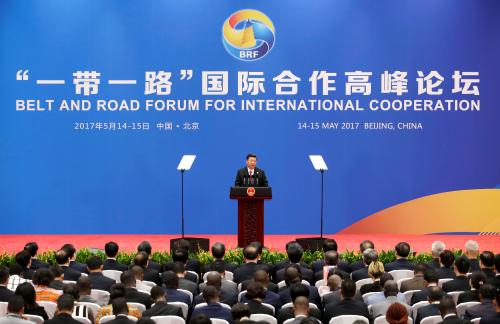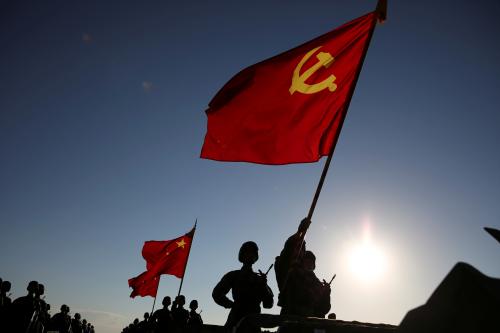Director’s summary
From a potential “responsible stakeholder” to a “strategic competitor,” the U.S. government’s description of China has changed dramatically over the past years. Once a de facto partner in the Cold War, Beijing is increasingly seen as an economic rival at home and a challenge to American power in Asia and perhaps abroad. Furthermore, as knowledge of China’s social controls and treatment of ethnic Uighurs spreads, many Americans wonder what role values and human rights should play in U.S. policy toward Beijing. The discourse around China and its role in the world is changing.
In spring 2019, Brookings Vice President and Director of Foreign Policy Bruce Jones convened four Brookings scholars and affiliates—Tarun Chhabra, Rush Doshi, Ryan Hass, and Mira Rapp-Hooper—to probe how the rising generation of foreign policy scholars think about the evolving debate around China and the future of the U.S.-China relationship.
The edited transcript below reflects their assessments of China’s evolving foreign policy intentions, their debates on how to define the changing U.S.-China relationship, the dynamics of strategic competition between Washington and Beijing, as well as potential policy responses.
The highlights:
- Assumptions that have guided U.S. relations with China since the Cold War are being revisited and in some cases overturned. While the intentions behind Beijing’s foreign policy decisions remain up for debate, China’s growing weight and impact are increasingly apparent in its immediate region and around the globe, necessitating a shift in policy response.
- Part of this shift stems from China’s growing relevance across strategic and regional domains, requiring engagement from a wider range of relevant stakeholders. From technology to the global economy and global governance, as well as from Southeast Asia to Europe, a growing number of issue areas are affected by Chinese actions and the U.S.-China relationship.
- Strategic competition between the United States and China requires concerted U.S. efforts in a range of domains beyond traditional defense issues alone—including diplomacy, infrastructure, development, technology and artificial intelligence, and more. However, nor can American policymakers ignore the changing security balance in the Indo-Pacific and its implications for U.S. operability and the credibility of American alliances with regional states.
- The Cold War model has limitations to the current context, and poor analogies can lead to bad policymaking. However, this caution should not prevent scholars from interrogating the history of the Cold War for applicable lessons to the current moment, particularly around societal mobilization for long-term peacetime strategic competition.
- While the onset of strategic competition between the United States and China creates areas of tension and rivalry, it should not be assumed that all areas of competition will result in a negative spiral. The prospect of positive “race-to-the-top” dynamics should be further explored in spaces like development in Africa and in infrastructure.
- U.S.-China strategic competition will be a critical lens through which to view the relationship in the coming years, but it cannot be the only one. The return of great power competition does not erase the serious transnational challenges that confront the globe. From combating infectious disease to preventing financial crises and countering climate change, the United States and China must work to preserve channels for cooperation.
- It is possible that we will look back at Xi Jinping as having made a critical strategic error to end prematurely China’s “hide and bide” policy, thereby enhancing Western pushback and resolve, rather than reaping the benefits of Western dysfunction.
- These caveats aside, the growing tensions of U.S.-China strategic competition are now upon us. This competition need not lead to conflict, but the relationship will require sustained attention and long-term diligence.
The Brookings Institution is committed to quality, independence, and impact.
We are supported by a diverse array of funders. In line with our values and policies, each Brookings publication represents the sole views of its author(s).











